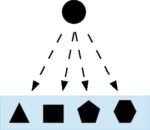This is Chapter 7 from my book: Ellerman, David. 1995. Intellectual Trespassing as a Way of Life: Essays in Philosophy, Economics, and Mathematics. Lanham MD: Rowman & Littlefield.
The watershed event in the philosophy of mind (particularly as it relates to artificial intelligence or AI) during the last decade was John Searle’s 1980 article “Minds, Brains and Programs.” This chapter was written about the same time and independently of Searle’s but it was updated in 1985 to take Searle’s work into account. Searle’s exposition was based on his now-famous “Chinese Room Argument”—an intuition pump that boils down to a nontechnical explanation of the difference between syntax (formal symbol manipulation) and semantics (using symbols based on their intended interpretation). Searle argues, in opposition to “hard AI,” that computers can at best only simulate but never duplicate minds because computers are inherently syntactical (symbol manipulators) while the mind is a semantic device.
The syntax-semantics distinction is hardly new; it was hammered out in philosophical logic during the first part of this century and it is fundamental in computer science itself. The purpose of our paper is to analyze the minds-machines question using simple arguments based on the syntax-semantics distinction from logic and computer science (sans “Chinese Room”). I arrive at essentially the same results as Searle—with some simplification and sharpening of the argument for readers with some knowledge of logic or computer science.





